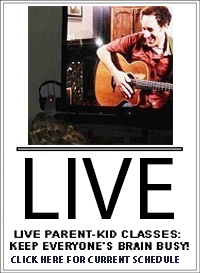Salsa is certainly a Latin form, with Latin origins both historically and musically, but it’s also undeniably a product of New York. As early as the 1940s New York City was a global center of Cuban dance music, with big bands such as MACHITO AND HIS AFRO-CUBANS combining Latin music with swing. In the 1950s, New York’s PALLADIUM BALLROOM primarily featured lively Latin dance music known as MAMBO, which had originated in Cuba. (Wikipedia’s entry on mambo tells us, “[t]he word ‘mambo’ means ‘conversation with the gods’ in Kikongo, the language spoken by Central African slaves taken to Cuba.” Whether or not that’s true, that’s pretty cool.) In the ’50s Machito and his band played mambo, as did singer and bandleader TITO RODRIGUEZ and percussionist/bandleader TITO PUENTE. By the earliest 1960s most popular Latin bands specialized instead in CHA CHA CHA, which was similar to mambo, but was slightly easier to dance.
[Watch vocalist, maraca player and bandleader Machito (Frank Grillo) and His Afro-Cubans perform their hit “Nague” | Watch Tito Rodriguez (on timbales) perform alongside Puerto Rican baseball player Orlando Cepeda | Watch Puente and his band play “Five Beat Mambo“]
In the 1960s, political problems between the United States and Cuba effectively stopped public communication between Cuban and American musicians. Whereas for a generation advances in Cuban music quickly hopped up America’s East coast to New York, in Cuba in 1963, MOZAMBIQUE, a vigorous dance style that fused mambo with the “conga” music of Cuban street carnivals, was only popular in Cuba. In New York, Puerto Rican pianist, EDDIE PALMIERI, heard mozambique and created a similar, though not identical, rhythm, that he also called mozambique. Without the regular interplay with Cuban musicians, Cuban mozambique and New York mozambique developed independently.
Watch a video of Palmieri’s “Sujetate La Lengua” from his 1965 album, Mozambique | Eddie Palmieri & vocalist Ismael Quintana perform, “Puerto Rico”/”Adoracion”]
In 1966 the Palladium lost its liquor license and the mambo effectively disappeared. A younger generation of New York-based Latin musicians replaced it with LATIN BOOGALOO, which was a mix of Cuban music and American Rhythm & Blues that featured both Spanish and English lyrics. [Watch Joe Cuba perform his Latin boogaloo hit, “Bang Bang,” in the 1960s] By the late ’60s, though, as almost every element of American life became “political,” Latino youth in New York City opened an eastern branch of the Chicago-born YOUNG LORDS, a radical community organization–detractors continued to call them a “street gang” for years beyond they were actually a street gang–that promoted Puerto Rican independence and the empowerment of people in poverty. The Young Lords also boldly embraced Latin culture, celebrating Latin music in particular as an essential element of Latin pride. [Learn about the Young Lords on YouTube by watching, “Fighting Much More than Poverty.”]
In the context of such social and political change, FANIA RECORDS, introduced above, launched in 1967 and began to release a series of recordings, mainly based in the traditions of Cuban son montuno and Puerto Rican plena, that increasingly blurred the lines between various Latin genres. Fania promoted this musical boundary-busting as the emergence of a new, culturally powerful, pan-Latin movement…SALSA!! Whether this was a marketing scam or an actual musical evolution, “the Fania sound” soon became so popular in the the “Nuyorican” community–the millions of people of Puerto Rican descent
who live in New York City–that in 1971 the FANIA ALL-STARS, a band of top Latin musicians who recorded for Fania, organized by Dominican band leader and flautist JOHNNY PACHEO, sold out a concert at New York’s Yankee Stadium.
[Watch Johnny Pacheo perform “Lamento De Un Guajiro” with Ismael Miranda and with Hector Casanova, both live in the ’70s | Watch the Fania All-Starts perform “La Debilidad” on TV and a riveting performance of “Anacaona” in 1971, including a behind-the-scenes look at a studio recording session]
Throughout the ’70s the New York salsa sound spread around the Latin world, with New York-based Fania artists like trumpeter WILLIE COLÓN becoming international stars and with international stars like Cuban vocalist CELIA CRUZ becoming New York-based Fania artists.
Top Latin musicians like Panamanian vocalist/lyricist/political activist RUBEN BLADES–who started his career in the mid-’70s working in the Fania mailroom–ultimately created in many Latin genres, and in the U.S. there was still a Latin music scene outside of salsa–EDDIE PALMIERI and MANNY OQUENDO played New York mozambique, for example, and TITO PUENTE, soared as a master of Latin Jazz–but in New York’s saucy late night dance clubs and in the record collections of Nuyorican youth, salsa ruled.
[Watch Willie Colón and Puerto Rican vocalist HECTOR LAVOE perform “La Murga” | Watch Celia Cruz & Tito Puente perform “Quimbara” | Watch Manny Oquendo (on timbales) y Conjunto Libre’s fantastic performance of “Elena, Elena” | Watch Ruben Blades and Willie Colón perform “Ojos,” apparently after taking their band shopping for hats.]
In the early 1980s Cuban musicians who had emigrated to the United States as part of the Mariel boatlift were surprised to find the most popular Latin genre was salsa, which sounded to them like Cuban music from the 1950s. As they integrated into the American Latin music scene they added more Cuban rhythms and spurred the development of Latin jazz. Still, at the same time salsa was spreading around the globe, inspiring musicians everywhere to create their own local variants. [Watch Jo Arroyo and his band perform the Colombian salsa song “La Noche” at Carnaval in Barnquilla, fusing New York’s salsa with Colombian cumbia and vallenato.] Salsa also birthed its own sub-genres, like the pop-oriented (and not always critically acclaimed) “salsa romantica,” which was salsa with lyrics that focused on love, and with music that emphasize melody and romantic lyrics over Afro-Cuban rhythms. [Watch salsa romantico singer José Alberto perform, “El Canario” in 1990, with two exuberant backing dancers in tow] Throughout the ’90s and to the present day, while “traditional” salsa remains popular in dance clubs far and wide, artists like innovative Puerto Rican hip hop band CALLE 13 continue to find new ways to weave it into their contemporary creations. [Watch Calle 13 and Ruben Blades doing a Latin roll call while performing “La Perla” on the Latin Grammies, complete with taiko drummers, posturing hip hop kids, backround dancers wielding bamboo and two acrobats they seem to have stolen from Cirque du Soleil.]





Comments are closed.